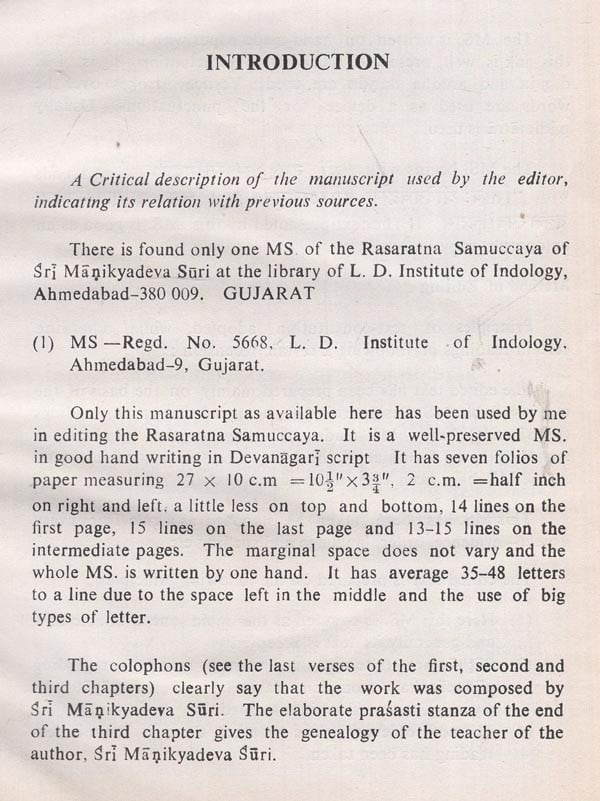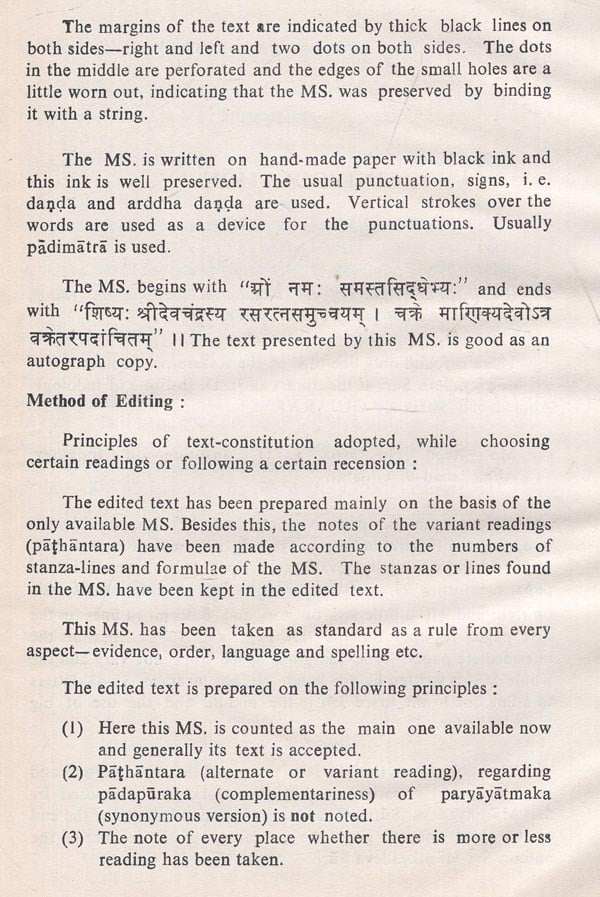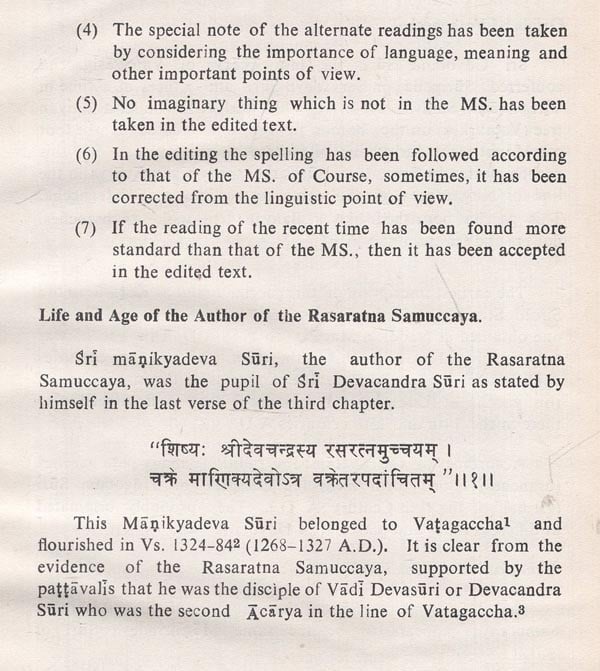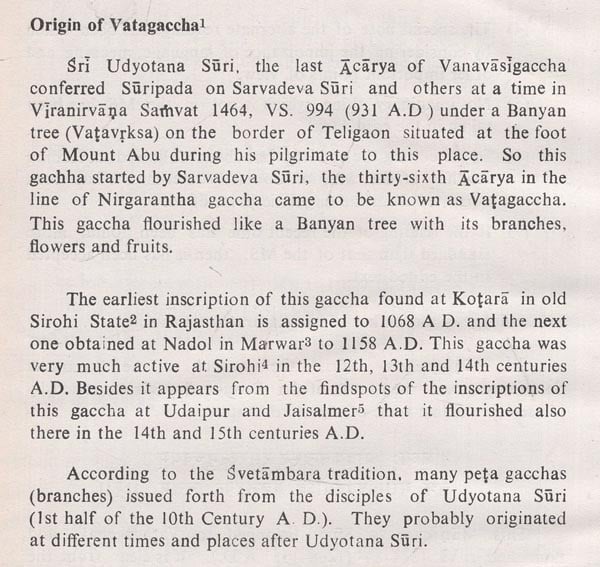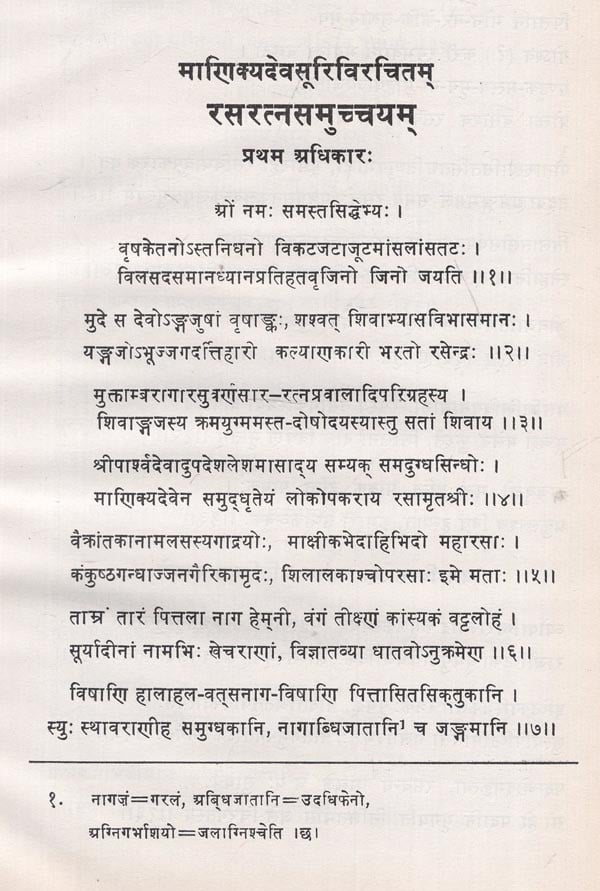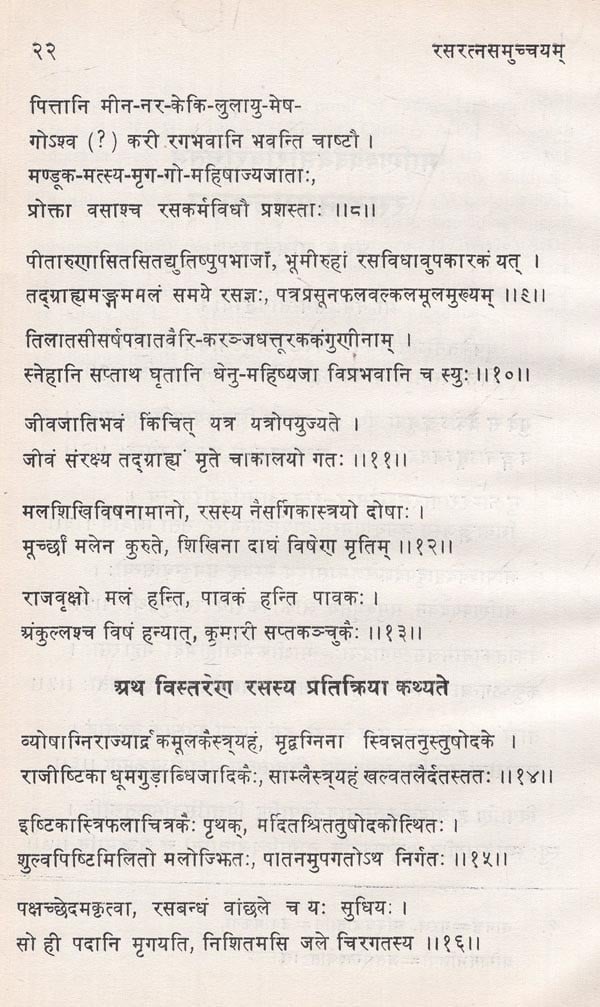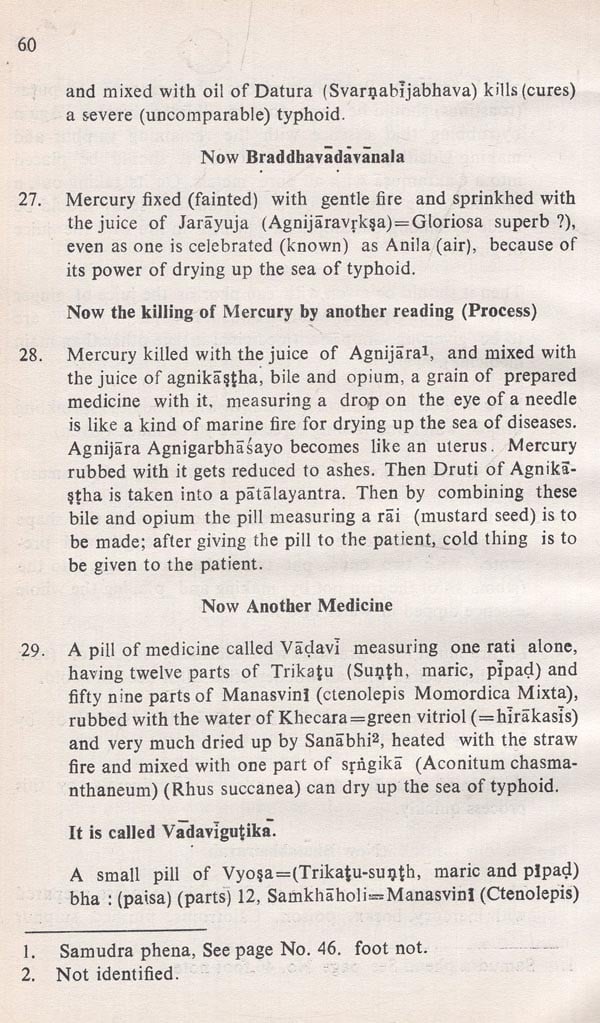
Rasa-Ratna-Samueeya of Manikyadeva Suri (An Old and Rare Book)
Book Specification
| Item Code: | UAC264 |
| Author: | J. C. Sikdar |
| Publisher: | Prakrit Bharati Academy, Jaipur |
| Language: | Sanskrit and English |
| Edition: | 1986 |
| Pages: | 80 |
| Cover: | PAPERBACK |
| Other Details | 9.00 X 5.50 inch |
| Weight | 120 gm |
Book Description
One of the cherished aims of the Prakrit Bharati Akademi has been to project India's thinking on scientific subjects. The Rasa-ratna-samuccaya will, we hope, be accepted as a fitting addition to our earlier publications on the subject. It is a medical text of the 16th century by Manikyadeva Suri. The main interest of the work lies in its treatment of pharmacology, especially in its concern with the chemistry and metallurgy of the production of certain medicines. It is an important text in a long tradition of Jain writings on the subject and will, we are sure, draw further attention of scholars towards this tradition as a whole.
On behalf of the Akademi, I express my thanks to the editor and translator of this text, Dr. J. C. Sikdar of the L. D. Institute of Indology, Ahmedabad. I am extremely grateful to Pandit Dalsukhbhai Malvania, the renowned scholar, for providing us with the opportunity of publishing this text. My thanks are also due to M. M. Vinay Sagarji, without whose efforts, both scholarly and otherwise, none of our publications would be possible. Kapur Printers also deserve our thanks.
A study of the Rasaratna Samuccaya of Manikyadeva Suri (16th Cen. A. D.)1 - a Jaina Ms., on alchemy and medicine, written in Sanskrit and now preserved in the library of L. D. Institute of Iridology, Ahmedabad-9 throws light upon some aspects of India alchemy and medical science. This Ms. has not yet been studied and edited by any scholar in India.
The alchemical thoughts and practices of the Jainas, fostered from the time of the Jainecaryas Nagarjuna and Padalipta Suri upto the Middle Ages, as embodied in different Jaina MSS., reveal an aspect of their material culture with scientific ideas combined with their interpretation in the light of other Indian literary evidences on Rasayanavidya (chemistry) and Dhatuvidya (metallurgy) and Ayurveda (medical science) of Iatro-Chemical period.
Alchemy dealt with by Jainacaryas has not yet been evaluated in relation to the Indian history of Alchemy. It seems that Western India (Gujarat), by virtue of its geographical position as a strong centre of Jainism from the beginning, was a receptacle for many alchemical ideas, specially from other culture-areas of India and outside.
A study of the extant Jaina Ms. "The Rasaratna Samuccaya" reveals scientific ideas and practices of the Jainas with two distinct trends in Alchemy, viz.
(i) Chemistry and metallurgy, and (ii) Medical Science.
It appears that during the period of the author of the Rasaratna Samuccaya with its system of Philosophy of mercury, a mass of chemical information was accumulated in the treatise on Rasayanavidya and Ayurveda.
The prominent feature of this work lies in the search after the elixir vital.
The numerous methods for chemical preparation of mercury, iron, copper, gold, silver and other metals and minerals were meant to be helpful accessories in medicines.
Whatever has been revealed by an analysis of the materials found in the Rasaratna Samuccaya under the preparations of mercury, all that has been said by some other celebrated Indian authors on alchemy and medicine for the benefit of the people afflicted with diseases.
The Rasaratna Samuccaya is purely a chemical work dealing with metallurgy, operation of mercury and various chemical processes are incidentally described in it.
The author of the Rasaratna Samuccaya, a devout Jaina monk, begins his work with an adoration of Tirthankara. It appears that the entire corpus of this work on alchemy and medicine is a composition and an epitome based upon some standard works on the subjects-chemistry, metallurgy and medicine and the contribution of the adepts.
It is interesting to note that Manikyadeva Suri declares his indebtedness to the previous Acaryas and their works for a knowledge of certain processes of alchemy arid medicine.
The peculiarity of the Rasaratna Samuccaya is this that it is based upon some Indian Ayurvedic texts on the one hand and Indian chemical treatises on the other.
It appears from a study of the contents of the Rasaratna Samuccaya in comparison with those of other Indian works on alchemy that this work is more or less a compilation based on some other Indian works of the latro-Chemical periods on the same problems or there might have been a common Indian source on alchemy and medicine from which all the Indian scholars of , alchemy might have drawn their respective alchemical information.
Alchemy as found in the Ms. "Rasaratna Samuccaya" has dealt with the mineral kingdom — Maharasas (superior minerals), Uparasas (inferior minerals), Ratnas (gems), Lohas (metals), etc. This work discusses mineral preparations and it also devoted itself to the short processes of killing metals and minerals.
Besides, some distilling apparatus (Yantras) have been mentioned in this work, e.g. Bhudharayantra, Dolikayantra, etc.
In short it has treated of mercury, minerals and metals, the construction of apparatus, the extraction of essence, liquefaction and incineration of metals, etc. The virtue of mercury are commended in this work that the people are freed from a multitude of diseases by partaking of medicines prepared with mercury.
The Ayurvedic method of treatment has been described in the Rasaratna Samuccaya and some portions of this work have particularly been devoted to mineral preparations, but it seems that they have been borrowed chiefly from some Indian works.
The Rasaratna Samuccaya has dealt with the preparation of medicinal tinctures and prescribed mercury, treated with some other minerals as the remedies for many diseases.
The period of Manikyadeva Suri (16th Cen. A.D.) constitutes the most flourishing and fruitful age of mediaval India relating to the accumulation of knowledge in chemical science, which was closely associated with medicine. The abstract theories relate to the physical, chemical and biological theories embracing the process of the entire cosmic evolution and the methodology of science.
**Contents and Sample Pages**